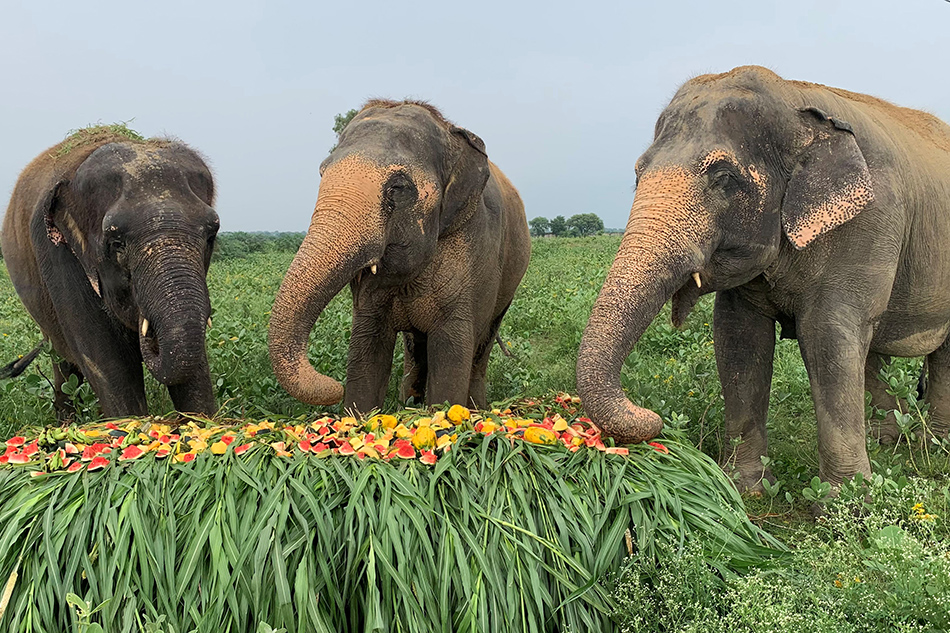FAST FACTS: Why is World Elephant Day celebrated every August 12? | ABS-CBN
ADVERTISEMENT

Welcome, Kapamilya! We use cookies to improve your browsing experience. Continuing to use this site means you agree to our use of cookies. Tell me more!
FAST FACTS: Why is World Elephant Day celebrated every August 12?
FAST FACTS: Why is World Elephant Day celebrated every August 12?
Josiah Antonio,
ABS-CBN News
Published Aug 12, 2021 06:13 PM PHT
|
Updated Aug 12, 2021 06:48 PM PHT
MANILA — Every August 12, conservationists commemorate World Elephant Day to remind the public that people must help stop elephants' population decline.
MANILA — Every August 12, conservationists commemorate World Elephant Day to remind the public that people must help stop elephants' population decline.
According to its website, the celebration was co-founded last August 12, 2012, by Canadian Patricia Sims and the Elephant Reintroduction Foundation of Thailand.
According to its website, the celebration was co-founded last August 12, 2012, by Canadian Patricia Sims and the Elephant Reintroduction Foundation of Thailand.
“Since its inception of global awareness building, it has partnerships with 100 elephant conservation organizations worldwide and reaches countless individuals across the globe,” the website wrote.
“Since its inception of global awareness building, it has partnerships with 100 elephant conservation organizations worldwide and reaches countless individuals across the globe,” the website wrote.
“Millions of participants worldwide have shown their concern about the plight of elephants through acknowledgment of World Elephant Day, proving that people love elephants and want to do whatever they can to help.”
“Millions of participants worldwide have shown their concern about the plight of elephants through acknowledgment of World Elephant Day, proving that people love elephants and want to do whatever they can to help.”
ADVERTISEMENT
According to World Wide Fund for Nature (WWF), there are two types of elephants currently in existence: African and Asian. African elephants can be divided into forest and savannah elephants.
According to World Wide Fund for Nature (WWF), there are two types of elephants currently in existence: African and Asian. African elephants can be divided into forest and savannah elephants.
The African elephant population has declined a century ago from roughly 12 million to 400,000 while Asian elephants are now only at approximately 40,000 worldwide.
The African elephant population has declined a century ago from roughly 12 million to 400,000 while Asian elephants are now only at approximately 40,000 worldwide.
“In recent years, at least 20,000 elephants have been killed in Africa each year for their tusks. African forest elephants have been the worst hit,” the WWF wrote on their website.
“In recent years, at least 20,000 elephants have been killed in Africa each year for their tusks. African forest elephants have been the worst hit,” the WWF wrote on their website.
“Their populations declined by 62% between 2002-2011 and they have lost 30% of their geographical range, with African savanna elephants declining by 30% between 2007-2014,” it added.
“Their populations declined by 62% between 2002-2011 and they have lost 30% of their geographical range, with African savanna elephants declining by 30% between 2007-2014,” it added.
“In Asia, there are approximately 70,000 people to 1 elephant across their range. There were over 100,000 elephants in Thailand at the beginning of the last century. There are less than 4,000 today,” the World Elephant Day website wrote.
“In Asia, there are approximately 70,000 people to 1 elephant across their range. There were over 100,000 elephants in Thailand at the beginning of the last century. There are less than 4,000 today,” the World Elephant Day website wrote.
ADVERTISEMENT
WFF noted that some of the threats to the lives of elephants are as follows:
WFF noted that some of the threats to the lives of elephants are as follows:
For African elephants
- wildlife crime
- poaching for the illegal ivory trade
- wildlife crime
- poaching for the illegal ivory trade
For Asian elephants
- habitat loss
- human-elephant conflict
- habitat loss
- human-elephant conflict
“This dramatic decline has continued and even accelerated with cumulative losses of up to 90% in some landscapes between 2011 and 2015. Today, the greatest threat to African elephants is wildlife crime, primarily poaching for the illegal ivory trade, while the greatest threat to Asian elephants is habitat loss, which results in human-elephant conflict,” it said.
“This dramatic decline has continued and even accelerated with cumulative losses of up to 90% in some landscapes between 2011 and 2015. Today, the greatest threat to African elephants is wildlife crime, primarily poaching for the illegal ivory trade, while the greatest threat to Asian elephants is habitat loss, which results in human-elephant conflict,” it said.
“WWF has advocated for an end to commercial elephant ivory sales in the US and other major markets like China, Thailand, and Hong Kong as the most effective and efficient solution to end this illegal ivory trade.”
“WWF has advocated for an end to commercial elephant ivory sales in the US and other major markets like China, Thailand, and Hong Kong as the most effective and efficient solution to end this illegal ivory trade.”
WWF listed some initiatives in order to save the lives of elephants as follows:
WWF listed some initiatives in order to save the lives of elephants as follows:
- reducing conflict between people and elephants
- strengthening anti-poaching initiatives
- stopping the illegal ivory trade
- reducing demand for elephant ivory
- protecting elephant habitat
- reducing conflict between people and elephants
- strengthening anti-poaching initiatives
- stopping the illegal ivory trade
- reducing demand for elephant ivory
- protecting elephant habitat
ADVERTISEMENT
ADVERTISEMENT



